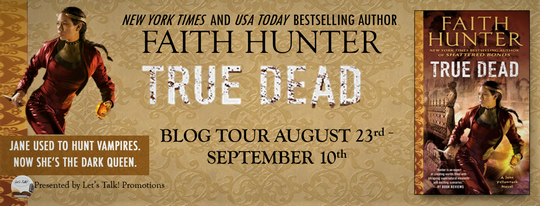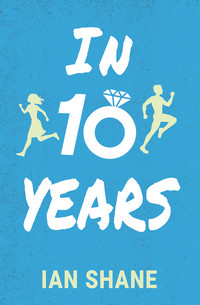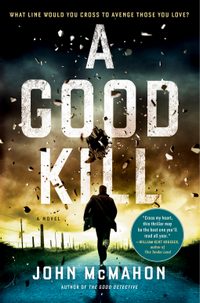Earlier today, I posted my thoughts about K.R.R. Lockhaven’s novel, The Conjuring of Zoth-Avarex: The Self-Proclaimed Greatest Dragon in the Multiverse, a book I strongly recommend. The author was gracious enough to spend some time responding to some Qs that I posed, I hope you enjoy his As as much as I did.
I typically ask about what led someone to being a writer, but you talked about a little in your recent guest post here. So instead—what led to you being a firefighter? Other than giving you more of an income than novelist will likely provide, how does it affect your writing? Is Jake you putting yourself in the novel?
That’s a tough question, since my memory is patchy at best. But I think the seed of the idea was planted when I read The Sirens of Titan by Kurt Vonnegut. There’s a line in that book; “I can think of no more stirring symbol of man’s humanity to man than a fire engine.” Reading that awakened something in me, and eventually led to me try to become a firefighter. It was probably a little of that, and a little of wanting a job that was considered “cool,” because I felt/feel very uncool.
Jake, a firefighter character from my book, is actually modeled after one of my coworkers who is this big, fun-loving guy who is nice to everyone and loves to pull pranks. I am much closer in personality to the main character, Harris, who is meeker and much more unsure of himself.
All authors have more ideas running around in their head than they can possibly develop—what was it about this idea that made you commit to it?
The fire department I work for is at a nuclear site in eastern Washington State. It’s a place that suffers from…bureaucracy issues. As a writer, I have long wanted to satirize the entire site in some way, but I could never find an angle I liked. Early on in my writing “career” I wasn’t writing fantasy, but I always felt a pull to start writing it. Then one day it just hit me—what if, instead of being a nuclear site that once made atomic bombs, there was a magical site, hidden away by the government, that tried to conjure a dragon? I was immediately taken with the notion, and the ideas really started flowing. There was no turning back from that point.
There’s a tricky element to the tone—keeping it fun and funny while maintaining the threat represented by Zoth-Avarex intact. Did that come naturally, was that something you had to work on over multiple drafts to make sure it worked?
Tone is a very tricky thing! I have to admit that it wasn’t something I thought of when writing the first draft, but I have learned a lot about it since then. My brother was the first to point out to me some of the initial inconsistencies with the tone. I went back through everything with that in mind, and tweaked it to what it is now. I think the fact that Silvia, the woman the dragon captures, is made to feel as comfortable as a prisoner can feel (like “a guest without leaving privileges”), helps to give it enough immediacy to be compelling (hopefully), but not a life-or-death, this-isn’t-fun-anymore, feel.
It’s hard to pick just one or two things to focus on to ask about that don’t involve spoiling the whole book…but I want to talk about Eddie for a minute. Where did that character come from? How do you keep yourself from letting a character as fun as that from taking over the novel?
I’m glad you liked him! He was loosely based on an old curmudgeon of a firefighter I worked with early in my career. Sometimes I feel like an imposter when I get credit for dreaming up a character like that, when I really had an inspirational embarrassment of riches at my job. He is a larger-than-life kind of guy who I was lucky enough to get to hang out with for a while.
I love a novel with comic footnotes. Can you talk a little about the choice to use that technique—in general, and how you decide when to use a footnote to deliver the joke rather than keeping it in the text?
I love footnotes, too! I recently read Jonathan Strange and Mr. Norrell by Susanna Clarke, and I thought the footnotes really expanded on the world of the book.
I wish I could explain the decisions, but it was mostly done by feel. I thought footnotes could be used to expand the world of the Site, too, and to get a into Zoth-Avarex’s history and psyche. In the end, I deleted a ton of footnotes. Many just weren’t funny, and having too many of them distracted from the story too much. Some of my favorite parts of the book are in the footnotes, though. Like the thing with the rise and fall of an entire civilization that went on for almost two pages. That was fun to write.
What was the biggest surprise about the writing of The Conjuring of Zoth-Avarex itself? Either, “I can’t believe X is so easy!” or “If I had known Y was going to be so hard, I’d have skipped this and watched more TV.”
The biggest surprise I found when writing the book is that I could actually write comedy. I wasn’t sure if I had it in me, to tell the truth. Among my group of friends, I’m probably the least funny of the bunch, but on the page, I have to admit that I have at least some comic ability. I was very hesitant to admit that, though. I mean, I made myself laugh with my goofball shit, but I didn’t know how others would receive it. It has taken a lot of positive feedback and some good reviews to convince me that maybe I don’t completely suck.
Let’s play “Online Bookstore Algorithm” (a game I made up for these Q&As). What are 3-5 books whose readers may like The Conjuring of Zoth-Avarex?
Another tough one! I know every author thinks their book is so unique, but I do have a hard time coming up with comparable titles. I am no Terry Pratchett, or Douglas Adams, but I do think that people who enjoyed The Hitchhiker’s Guide to the Galaxy or anything by Pratchett might get a kick out of my book. Also anyone who grew up reading Tolkien, or just fantasy in general, and would like to see the genre lovingly skewered. One recent, semi-comparable title is The Part About the Dragon Was (Mostly) True by Sean Gibson.
What’s next for K.R.R. Lockhaven, author?
I was lucky enough to recently sign a three book deal with Shadow Spark Publishing, and they are going to publish my humorous hopepunk nautical fantasy trilogy. Book one, tentatively titled Marauders, Daughters, and Dragons, is slated to come out in the summer of 2022. The series will take place on another world, but will still be within the Zoth-Avarex multiverse (wink wink). My writing has made a slight shift toward the more heartfelt and serious, but there is still a lot of foul-mouthed fun, like a shit-talking bird companion, a reanimated skeleton with confidence issues, and a group of failed pirates who just want to sing and have adventures.
Thanks for your time—and thanks for The Conjuring of Zoth-Avarex, I had a blast with it and I hope you have plenty of success with it.
Thank you very much! I’m so glad you enjoyed my book. This interview was really fun! The questions were tough, and unique, and you really made me think. I loved it.







